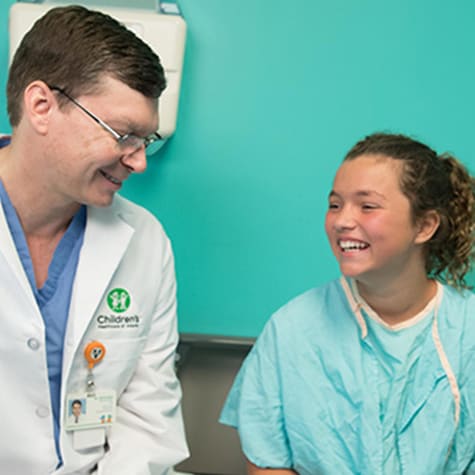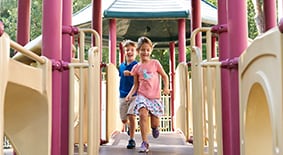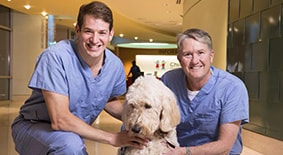Joseph’s Hip Pain Confused His Doctors—Then Dr. Olszewski Watched Him Walk
The usually active Joseph was struck by sudden, perplexing knee and hip pain. At Children’s Healthcare of Atlanta, he finally got a diagnosis: a rare condition called Legg-Calve-Perthes disease.

Joseph was playing baseball in the yard with his family when he started to complain of pain in his hip. A week later, it was his knee that was bothering him.
His mother, Kerry, took Joseph to their family pediatrician, who advised that the 5-year-old rest for a few weeks, but Joseph’s knee pain continued to intensify.
Perplexing symptoms
Eventually, the family was referred to an orthopedist. “It had been about a month, and Joseph started getting really bad,” says Kerry. “He would wake up and could barely walk. Something had to be really wrong. He looked terrible.”
The orthopedist, more experienced with adult cases, performed an X-ray on Joseph’s knee and hip. But he wasn’t able to provide a diagnosis.
An on-sight diagnosis
Next, the family turned to Children’s. They met with Dana C. Olszewski, MD, a Pediatric Orthopedic Surgeon at Children’s.
“At our first appointment, Dr. Olszewski asked Joseph to walk across the room and said, ‘I think I know exactly what’s wrong with him.’ We were so relieved,” says Kerry.
X-rays helped Dr. Olszewski confirm her suspicion: Joseph had Legg-Calve-Perthes disease, a condition that arises when blood supply to the hip is interrupted, deteriorating the ball section of the hip joint and leading to collapse or malformation.
Legg-Calve-Perthes affects fewer than 29 in every 100,000 children under 15 years old. “While this is a rare condition, our team at Children’s has been trained to look for it and appreciate what is oftentimes a very subtle hip finding at first in these children,” says Dr. Olszewski. “If we can note it early and treat it appropriately, the outcome can be better than if found later.”
Taking it slow
Generally, recovery for Legg-Calve-Perthes disease takes between 18 and 24 months. Treatment is complicated by the fact that it requires children to slow down or restrict their activity entirely. Some patients require a cast or a wheelchair.
“There is not one treatment protocol that works for all patients, so each patient’s treatment plan should be individualized,” says Dr. Olszewski.
Joseph would need to stop most activity to recover. He’d need to put all of his favorite activities—running, kicking, jumping and martial arts—on hold.
“It was just so sad and pitiful when Joseph had to quit Tae Kwon Do,” says Kerry. But Joseph stayed strong. “His care team has been optimistic and creative in activities for Joseph, which has been key in creating this happy, joyful child.”
An enthusiastic return
Today, Joseph has a clean bill of health. He even ended up competing with the National Grappling Foundation once he healed fully.
Joseph’s family is grateful for the level of care Joseph received at Children’s. “We were really amazed with Dr. Olszewski,” Kerry says.
“She knew exactly what was wrong with Joseph when everyone else seemed to just shrug their shoulders and say they didn’t see anything. We were just so impressed with everything we have experienced.”

We are specially trained to care for common and rare hip conditions.
Left untreated, hip conditions in children can lead to serious problems later. Our team of orthopedic specialists is trained to recognize and treat hip conditions early.
See MoreContact Us 404-785-KIDS (5437)


